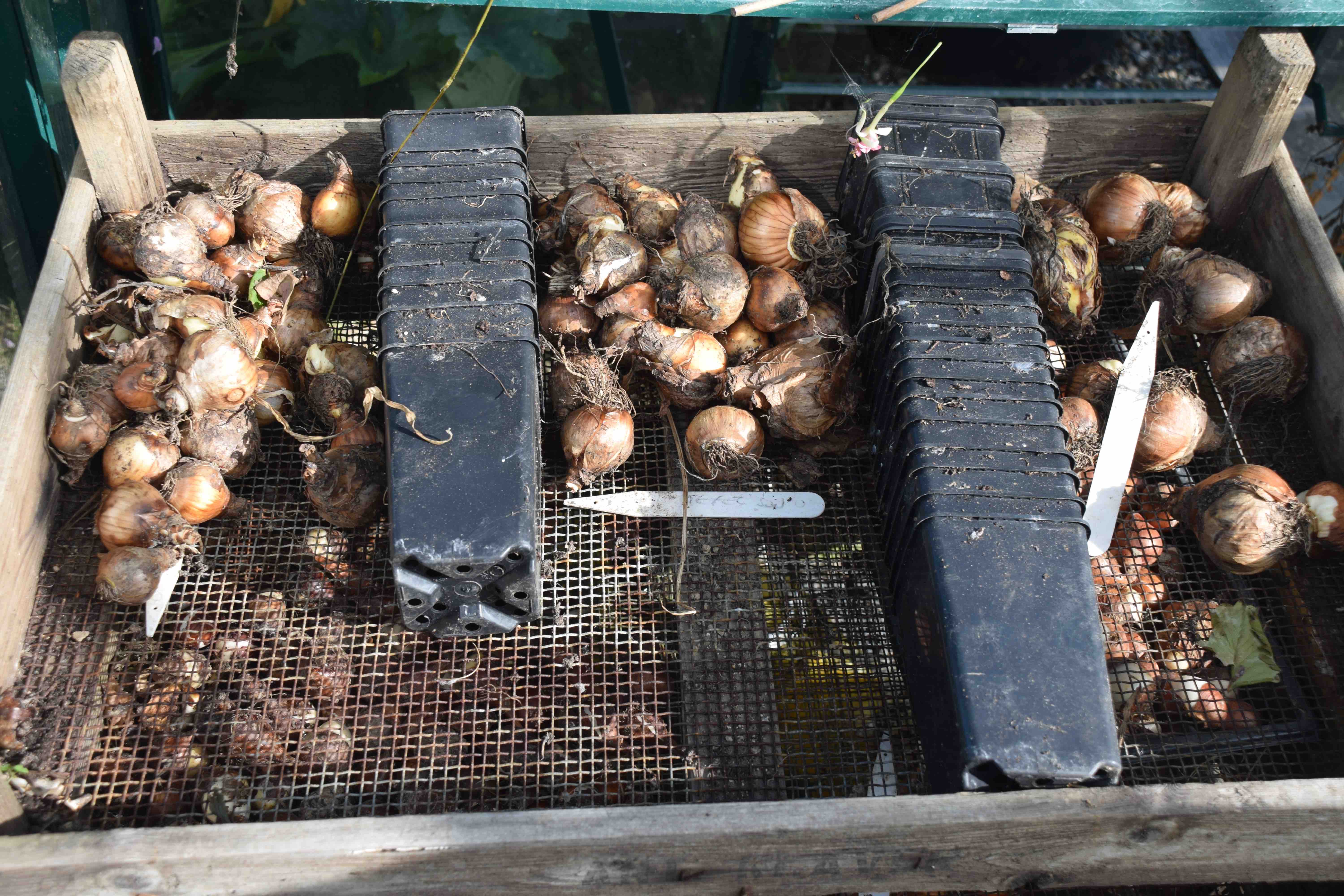
Autumn is definitely here. Nights are cold and heavy rain and wind has flattened the last summer flowers. It is sad but we can now think about spring. Nothing is more beautiful and cheering than the sight of daffodils after a long, cold winter and now is the time to plant them.
One of the great things about daffodils is that they delight in the British climate and will not only last for many years but they should increase and get better every year. That makes them great value. A little effort now will be repaid for years to come.
Daffodils are very diverse and they vary in height from 15cm to 70cm high. They can flower from February to early May, according to variety.
They can be grown in borders, in grass and in pots.
They are hardy and tolerate all sorts of soil. Avoid soils that are waterlogged in winter.
They grow in part shade or full sun – deep shade under trees will mean fewer flowers after the initial planting.
When you buy bulbs the flower will already be developed in the bulb so the bulbs are sure to bloom the first spring – but they need light and time for the foliage to develop after flowering to produce a bloom the following year.
I grow more than 100 different kinds and buy more every year. My expensive, new daffodils are planted in pots the first year and then I sort them and plant them in the garden. Daffodils in the garden start to grow and produce roots surprisingly early and it is too late to dig them up now. I cleaned and sorted mine in June – and they are planted now (pic above).
If you want to plant daffodils in patio pots they can be left for many years in the pot and do not need to be lifted every year but if you do this make sure the compost is John Innes compost and NOT multipurpose compost – or mix half and half. In this way you can have daffodils underplanted around shrubs in patio pots.
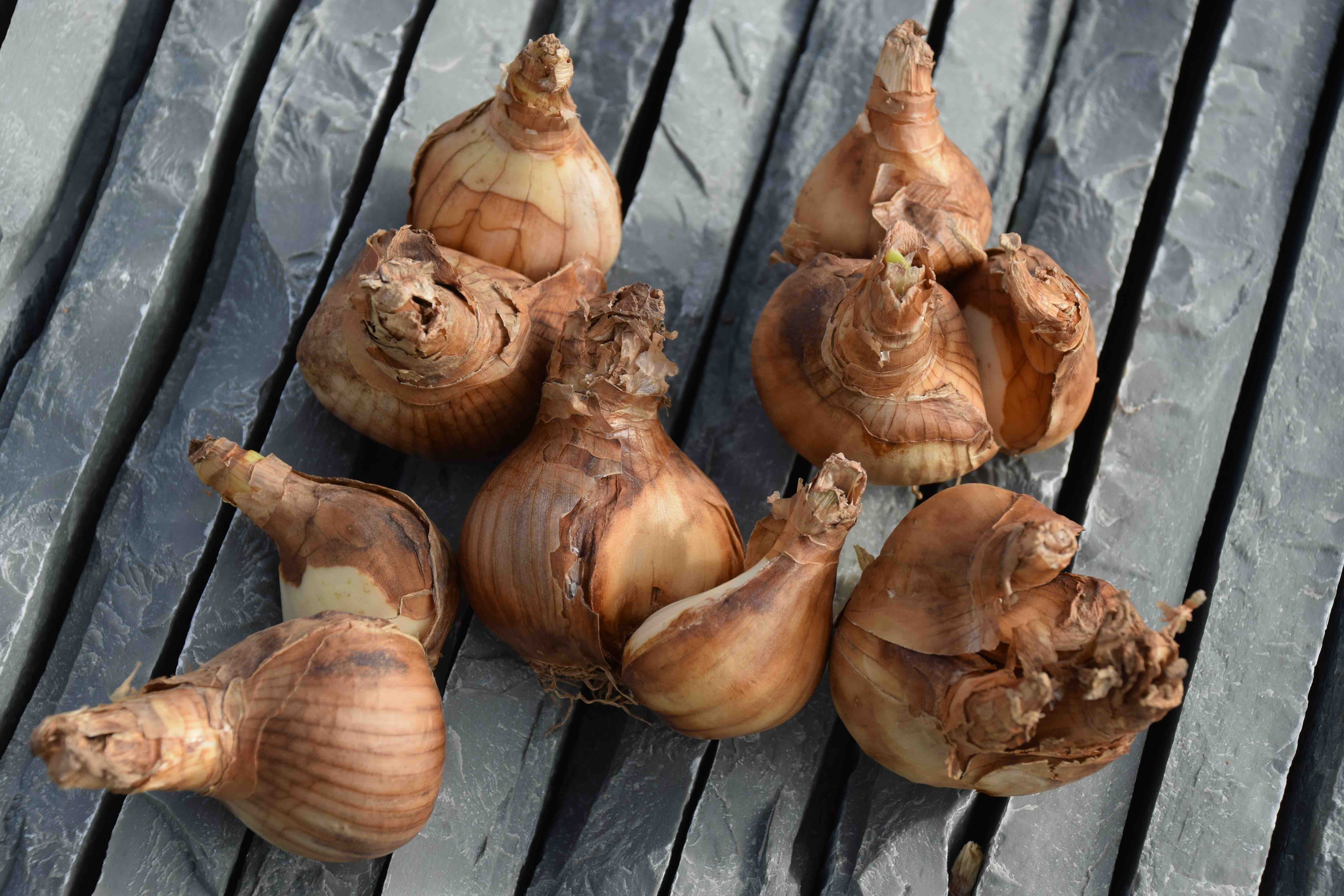
When you buy bulbs they may be single-nosed bulbs (which will produce the best flowers and minimal foliage) or mother bulbs (which will produce good flowers but also lots of leaves from the subsidiary, smaller bulbs. If the small bulbs can be easily removed from the main bulbs you can do so. The smaller bulbs will probably not flower. If planting in pots, where you want maximum flower in a small space, plant the big, single-nosed bulbs and plant the smaller, offsets in the garden. This maximises flowers and reduces the amount of foliage in the pots. The smaller bulbs should get bigger after a year and bloom the following year.
But this week I want to talk about planting in grass. Next week I will cover daffodils in more detail, but for this week, naturalising in grass.
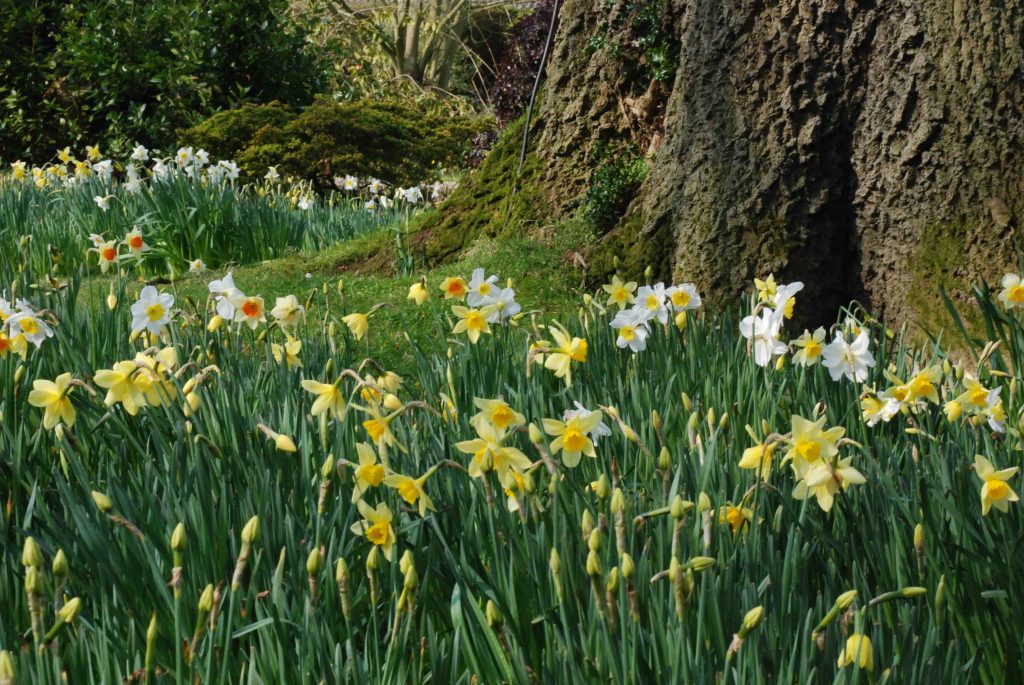
Because daffodils will live for years, they are ideal to plant in grass. They will bloom every year and I think daffodils look perfect in grass. Planting is time-consuming and needs some thought but only needs to be done once.
Good planning is important because it is difficult to remove the daffodils once planted in a lawn! Also, the most important thing to remember is that you MUST allow the foliage to develop for six weeks after the daffs have bloomed before you cut the foliage back. You must not break this rule if you want flowers every year.
For this reason, it is best to choose daffodils that flower early in spring. It is a rather dull suggestion but you really can’t beat ‘Tête-à-tête’. This is the most popular of all daffodils and also the cheapest. But it really is impossible to better! It flowers early, has many flowers per bulb and is short. This means it fits into smaller gardens, as well as pots, and it grows like a weed! There is now a double form, called ‘Tête Boucle’ which is also reliable and a bit different.
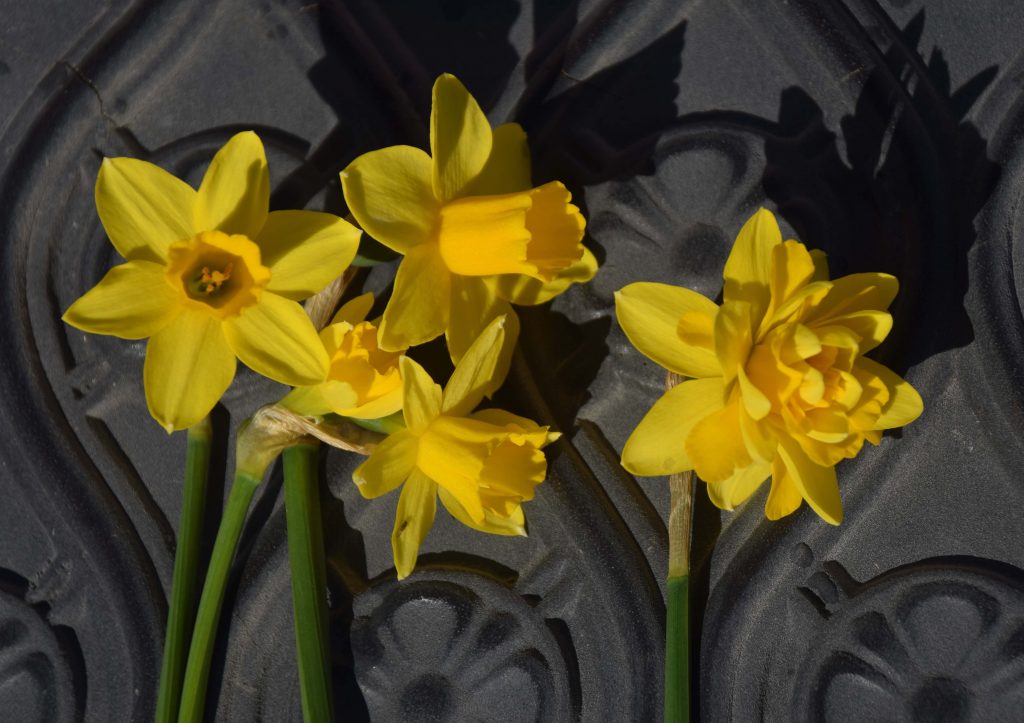
You can plant this on its own or mix with other small daffodils such as cream ‘Elka’ or with crocus.
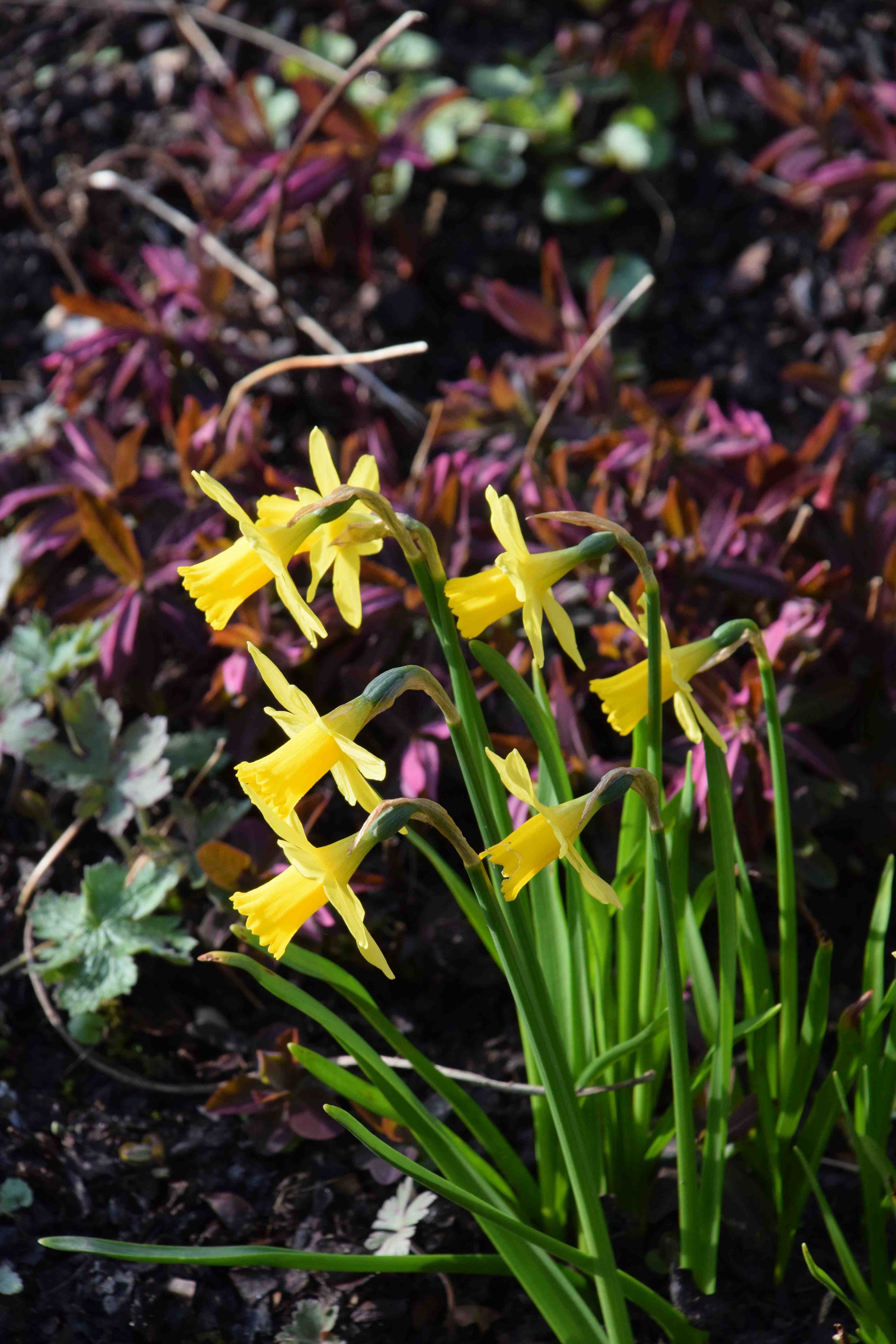
How to plant
You can plant in grass with a spade, either digging holes or lifting turf, but I use a long-handled bulb planter. In my heavy soil I find that small, cheap bulb planters are worse than useless! They bend and fail after a few holes. The long-handled kind, you push in with your foot, are far better. Repeatedly making holes pushes the plug out of the cutter and I go over the area making the holes first and then go over and plant the bulbs.
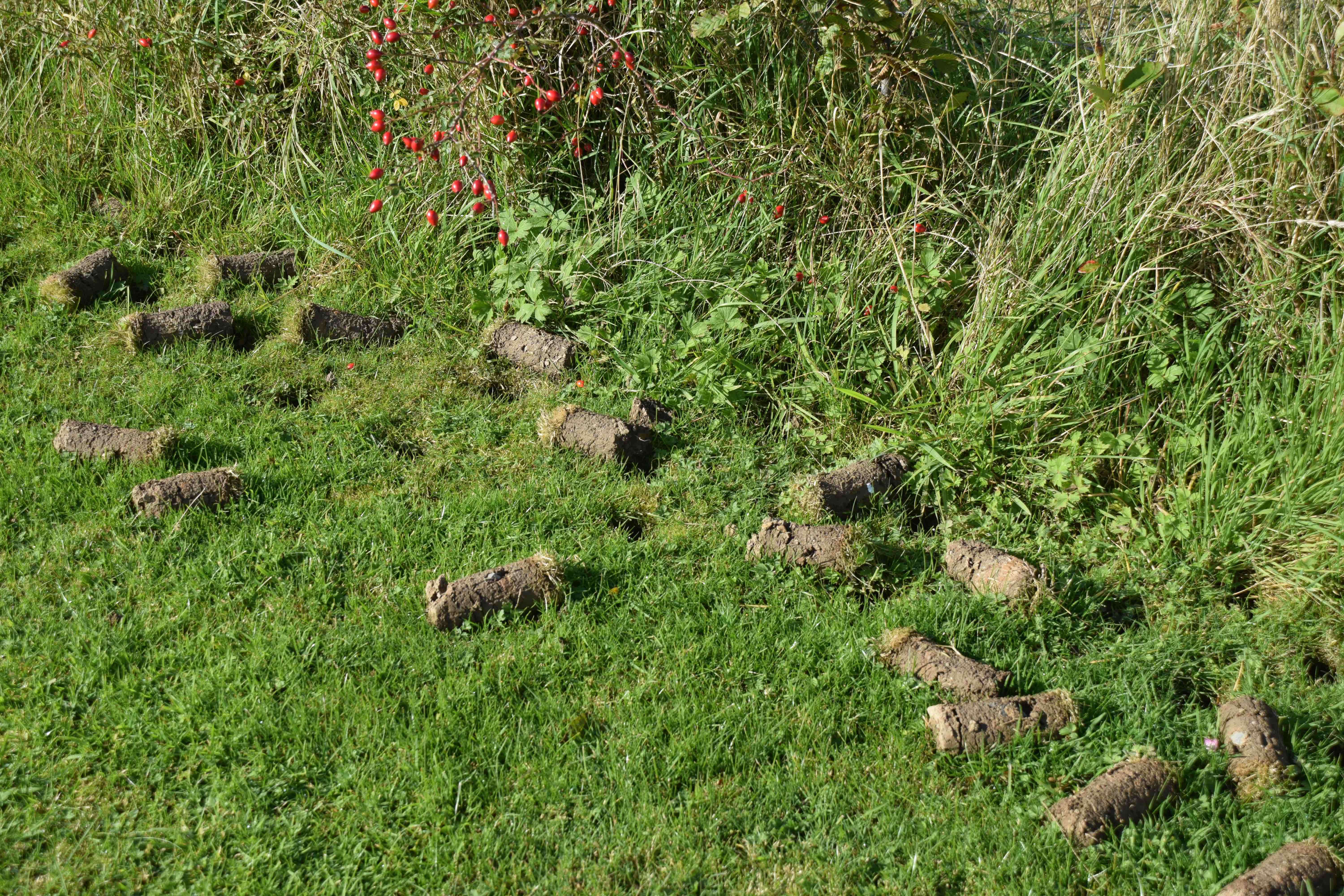
I don’t scatter the bulbs over the lawn, and I plant in drifts. Because the bulbs will be in the soil for many years I space them about 15-20cm apart so they make a good show the first year but have room to increase. I tend to plant against hedges because it is easy to leave the grass longer here in spring and daffodil flowers always face the light as they open so I can be sure the flowers will face me!
Selection of varieties is important. It is a matter of personal taste but I don’t like cheap ‘naturalising mixes’. I prefer to plant one kind or two kinds to give a more ordered effect. Also, simple kinds look better in grass than more fancy kinds. Doubles never look right in grass and they are often top-heavy and flop which is no use. Yellow, yellow and orange or white look more natural.
There are a few exceptions to this rule! ‘Rip Van Winkle’ is a dwarf double with flowers that look like dandelions. It is a very old variety and is lovely when grown in grass. Even better is ‘Van Sion’. This is one of the oldest of all daffodils and I first knew it when it had survived in grass when we lived in an old Victorian Vicarage in Lingfield. It is a double form of a wild daffodil and the variable flowers are intriguing and beautiful. It was rather rare twenty years ago but is now readily available and deserves to be planted for historical interest. You can read more about it on my own blog here.
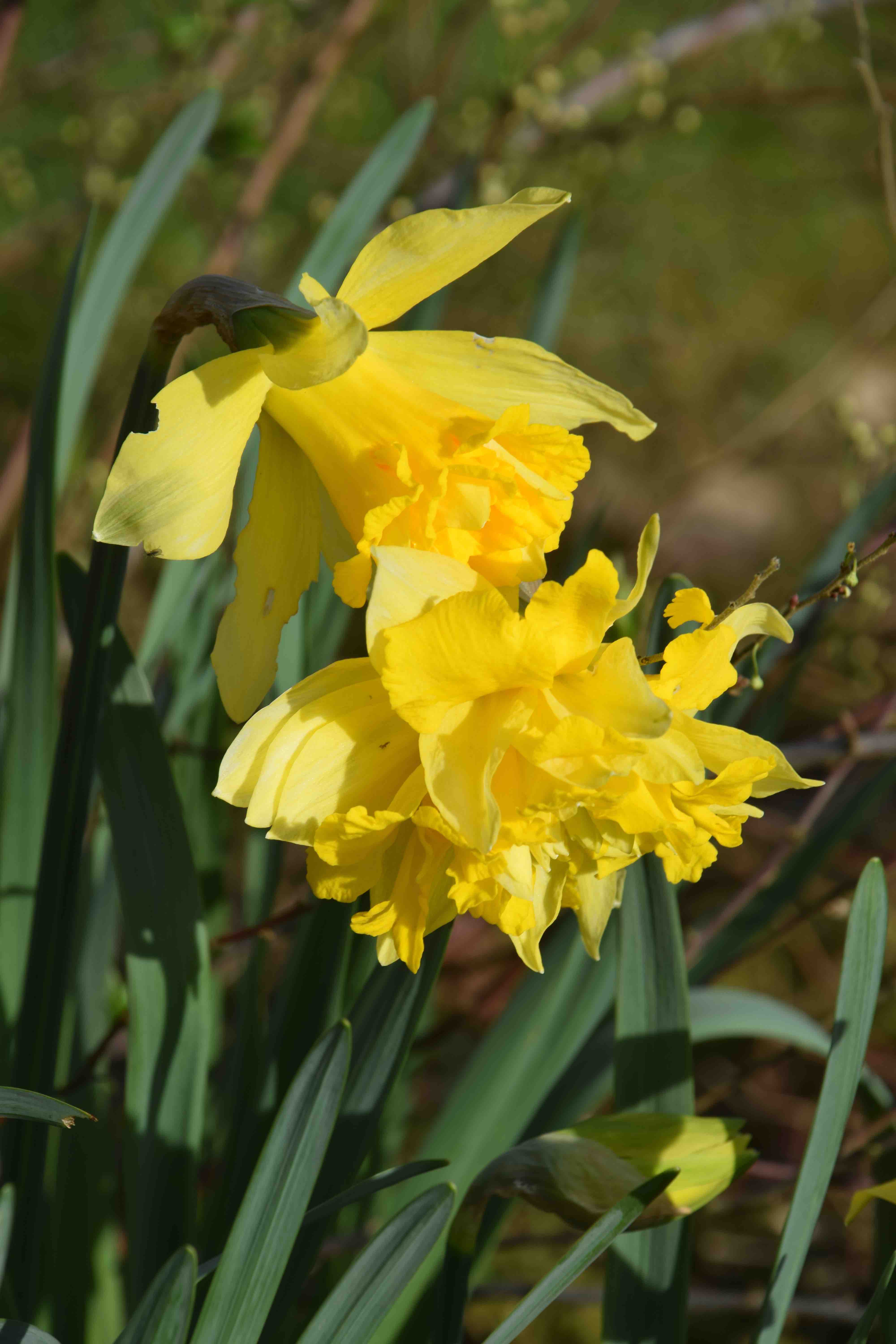
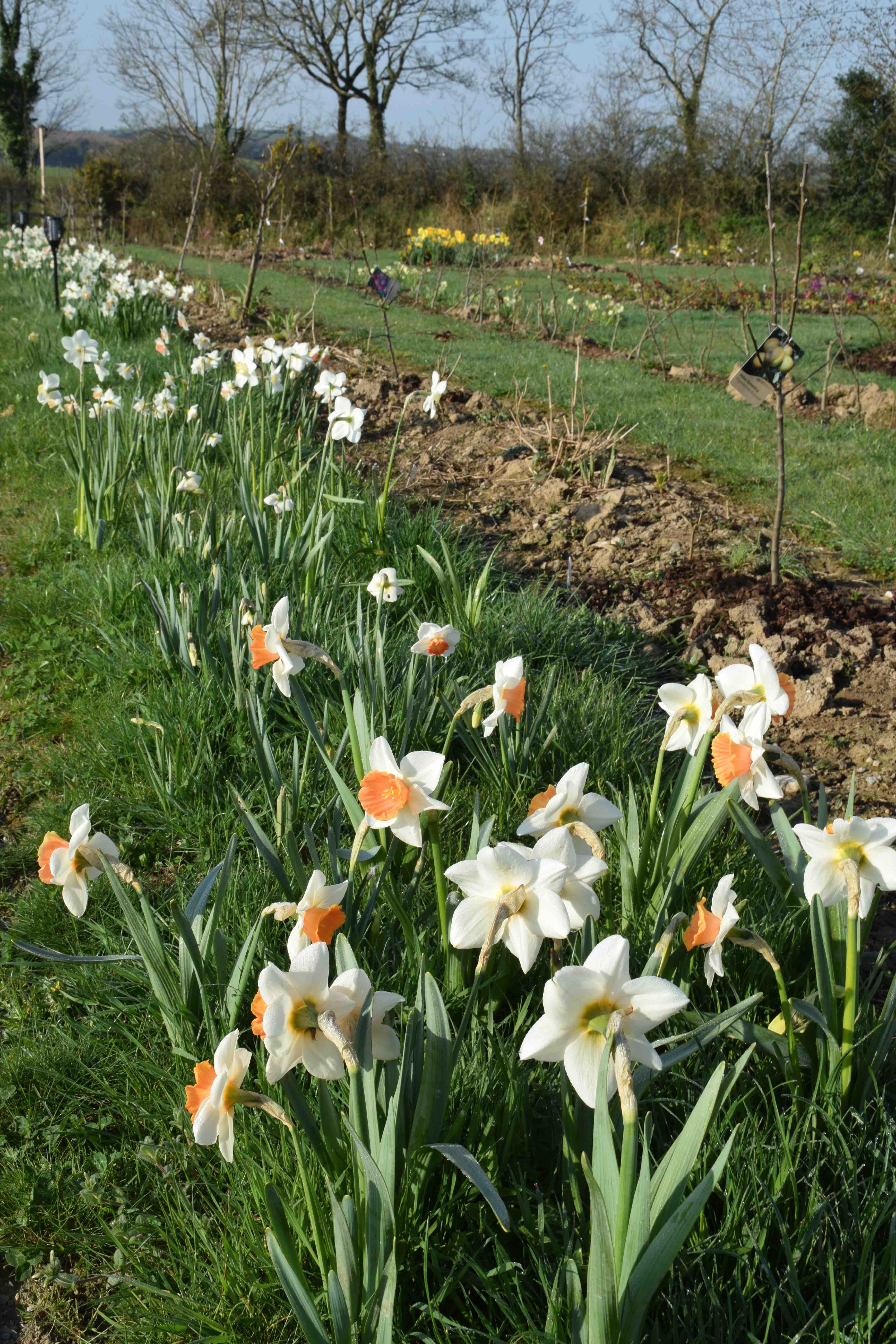
Despite all that, I have planted pink and white daffodils in the grass along my drive! I have a number of different kinds that flower over a prolonged period and, when the apple trees get bigger, will get a little shade and face towards the drive. The idea was that they would reflect the colour of the apple blossom! I admit that this display would be a lot more striking if the daffodils were all yellow but I am happy with the more subtle colour range and if I had mixed in some yellow it would not look as good.
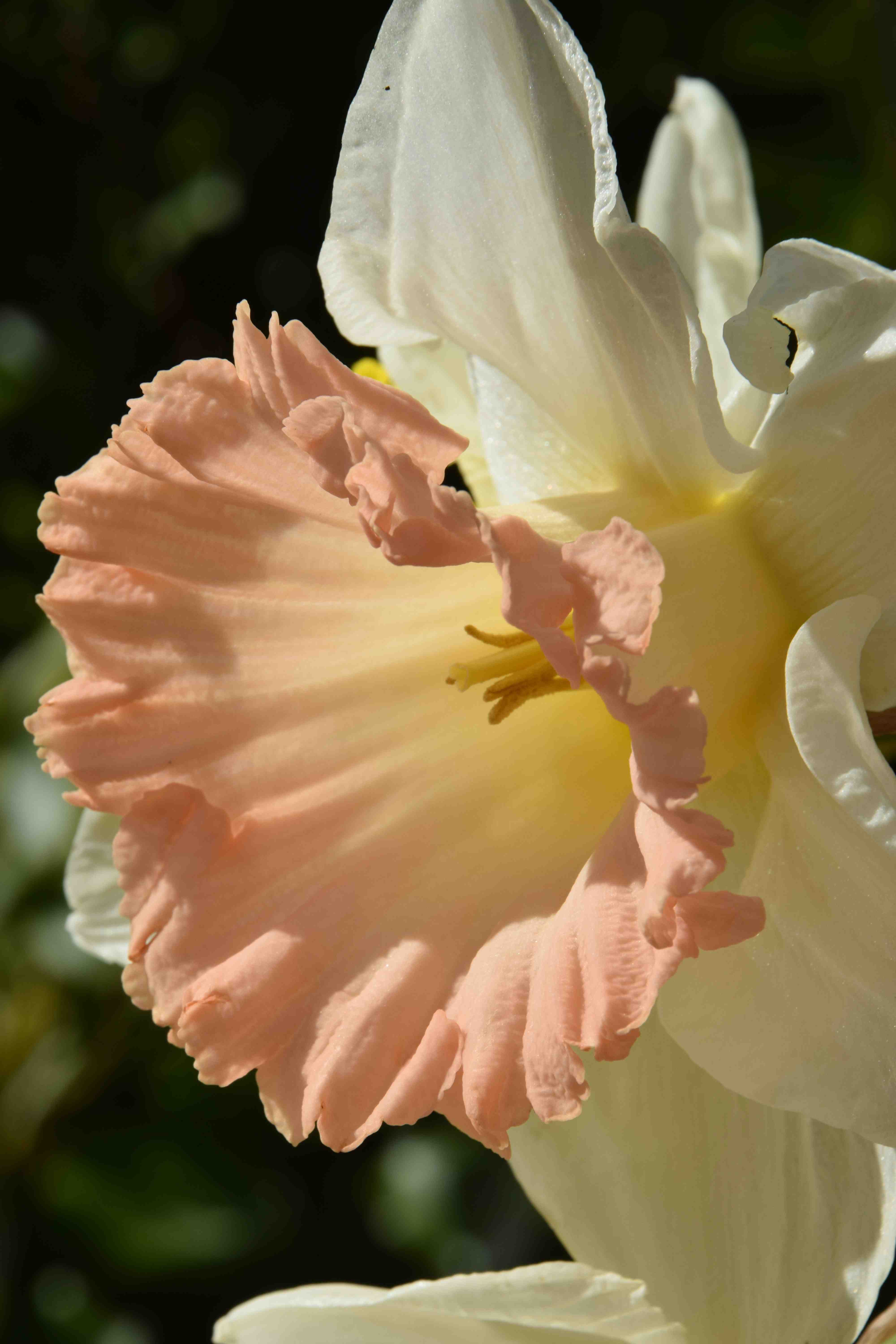
Pink daffodils are possibly an acquired taste and I know that some people are not convinced! But I think they are lovely and a good option for those people that wince at bright yellow in spring! Older kinds often opened creamy yellow or salmon and only turned pink as they aged but modern kinds are more convincing pink. ‘British Gamble’ is a large and beautiful flower and ‘Perfect Lady’ is among the brightest pink of all. There are now dozens of options.
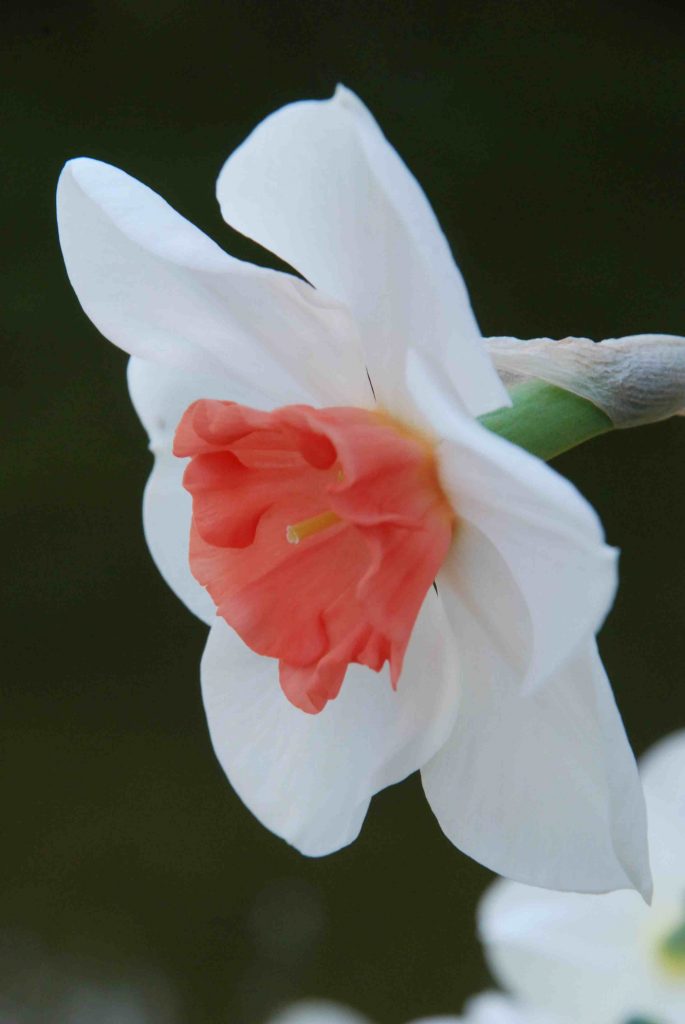
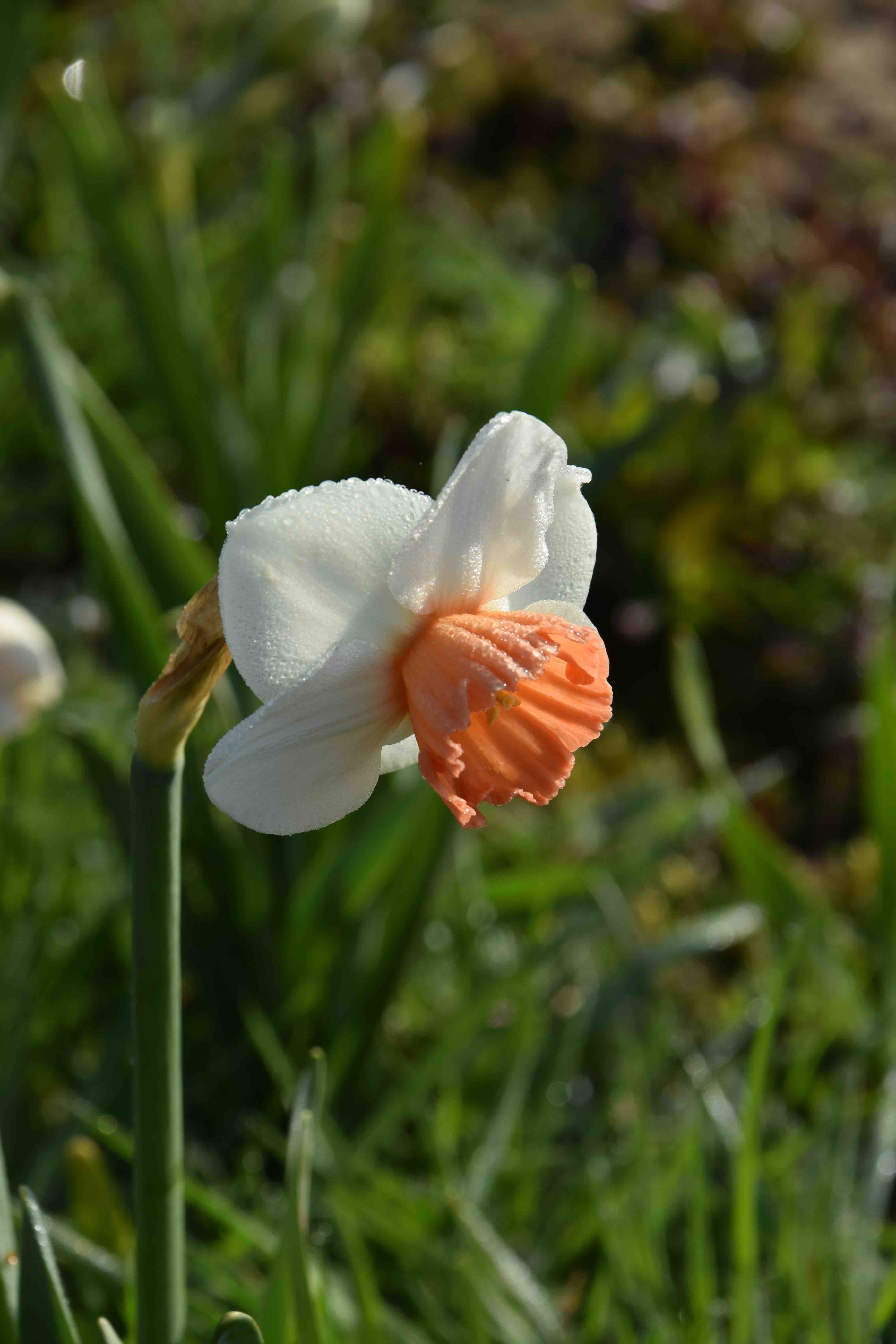
Pink daffodils are no harder to grow than other kinds and are worth trying if you want something different. ‘Salome’ is a popular, older kind that ages to pink.
Did you know?
Daffodils and narcissus are the same thing and daffodil is the common name for narcissus. It is not that narcissi are short-cupped with white petals and daffodils are yellow – as I thought when a child!
Next week – more on daffodils